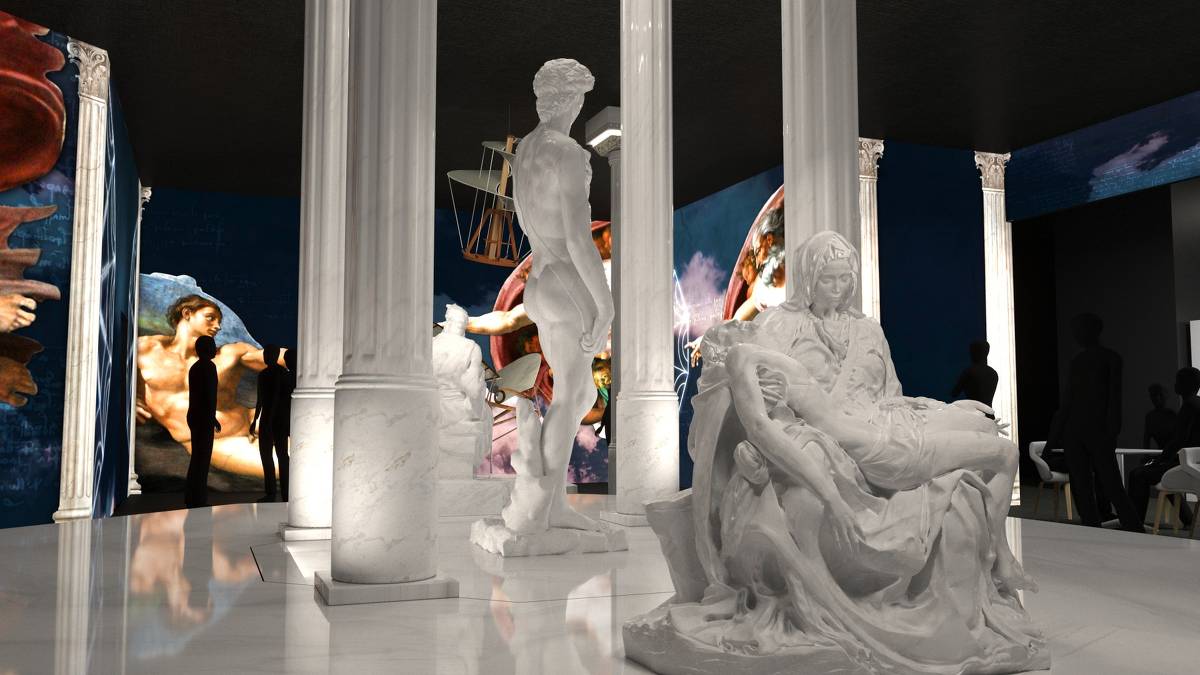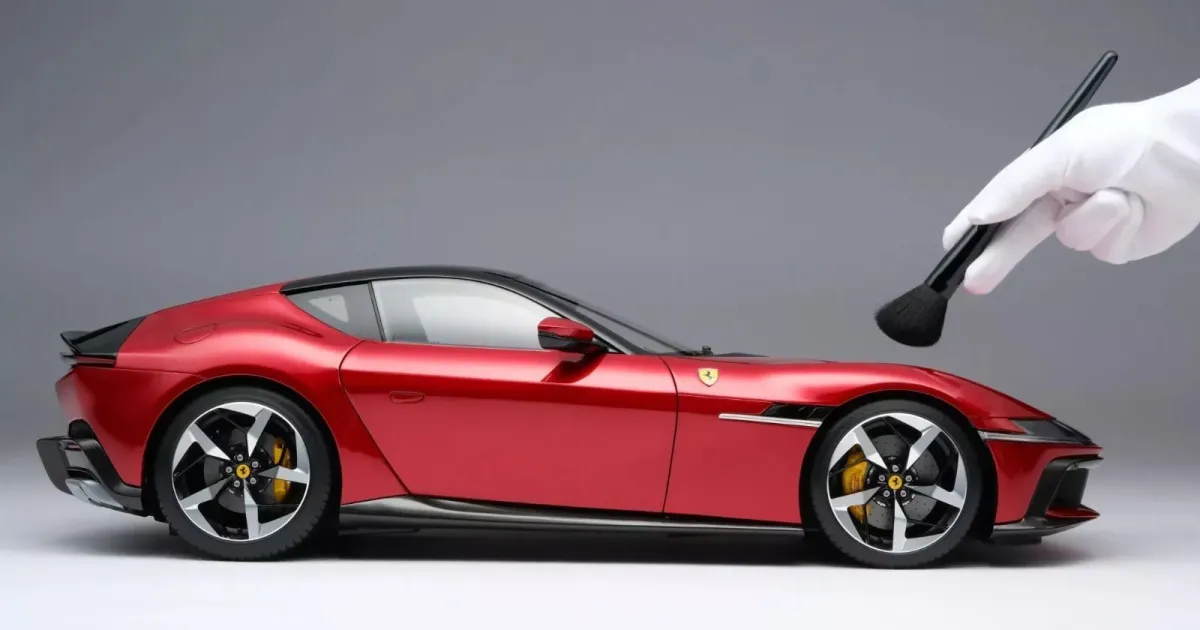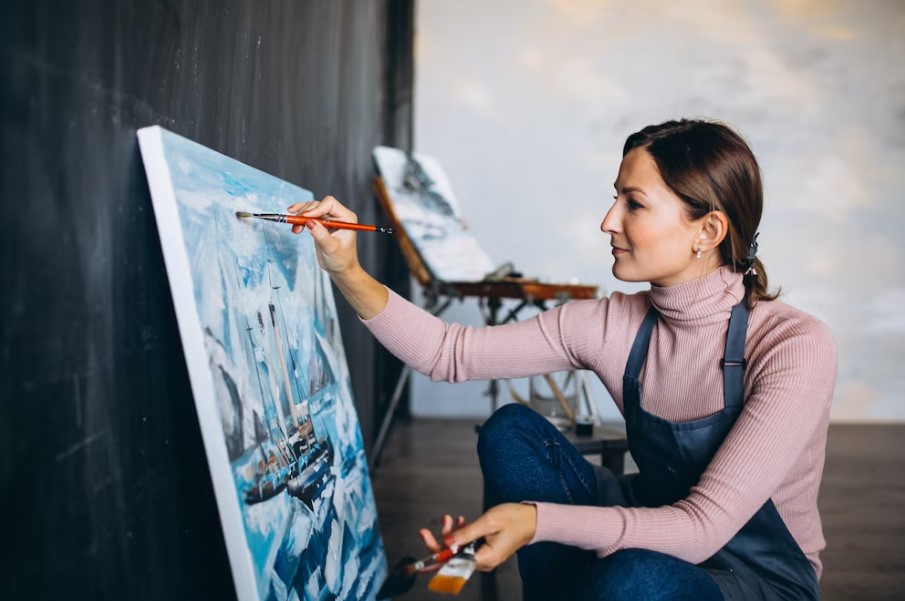Miniature modeling transforms imagination into tangible art, where every material choice shapes worlds that fit in the palm of your hand. ✨
🎨 The Foundation: Understanding Base Materials for Miniature Construction
The journey into miniature modeling begins with selecting the right foundation materials. Your choice determines not only the final appearance but also the durability, workability, and overall success of your tiny creation. Each material brings unique properties that can make or break your miniature world.
Plastic remains the most popular choice among miniature enthusiasts for good reason. Polystyrene sheets, commonly known as styrene, offer exceptional versatility and ease of cutting. This thermoplastic material responds beautifully to modeling knives, sands smoothly, and bonds permanently with plastic cement. The availability of various thicknesses makes styrene ideal for everything from structural walls to delicate trim work.
Foam board provides another excellent option for creating miniature structures quickly. This lightweight material consists of polystyrene foam sandwiched between paper or cardboard sheets. Its ease of cutting and minimal weight make it perfect for beginners and large-scale miniature projects alike. However, foam board requires careful sealing before painting to prevent absorption and maintain crisp details.
Working with Wood in Miniature Scale
Wood brings organic warmth and authenticity to miniature projects that synthetic materials struggle to replicate. Balsa wood, with its soft texture and light weight, cuts easily with hobby knives and accepts paint readily. Bass wood offers greater strength and smoother grain, making it ideal for furniture pieces and structural elements requiring durability.
For realistic timber effects, consider using scale lumber products specifically manufactured for miniature modeling. These pre-milled strips, planks, and beams come in various scales and save countless hours of preparation time. Coffee stirrers and popsicle sticks also serve as economical alternatives for rustic projects.
🏗️ Sculpting and Shaping: Moldable Materials That Bring Details to Life
Creating custom elements elevates miniature projects from simple assemblies to true artistic expressions. Moldable materials empower modelers to craft unique components that commercial products cannot provide.
Polymer clay revolutionized miniature modeling by offering an accessible sculpting medium that cures in home ovens. Brands like Sculpey and Fimo provide consistent quality and extensive color ranges. This material excels at creating figurines, food items, decorative elements, and organic shapes. Polymer clay maintains flexibility during work sessions and hardens permanently after baking, accepting paint and sealants beautifully.
Epoxy putty presents another powerful option for detail work and modifications. Two-part epoxies like Milliput or Green Stuff become rock-hard after curing, allowing for precise sanding and drilling. These materials work exceptionally well for gap filling, creating textured surfaces, and building up areas requiring structural strength. The working time varies by brand, giving modelers flexibility in their workflow.
Air-Dry and Natural Clays
Air-dry clays offer convenience for those without access to ovens or preferring more traditional sculpting experiences. These materials shrink slightly during drying but require no special equipment. Paper clay, a cellulose-based variant, provides exceptional lightness and minimal shrinkage, perfect for delicate miniature work.
Traditional modeling clay remains useful for temporary sculpting and creating molds. Though it never hardens permanently, its reusability makes it economical for practice and prototyping. Many professional miniaturists use modeling clay to develop forms before recreating them in permanent materials.
🎭 Surface Magic: Texturing Materials for Realistic Environments
Authentic miniature worlds depend heavily on convincing surface textures. The right materials transform flat surfaces into believable landscapes, weathered walls, and intricate ground cover.
Model railroad ballast and scenic materials provide ready-made textures in various scales and colors. These granular products represent gravel, dirt, sand, and rock with remarkable realism. Application involves spreading material over wet glue, allowing proper adhesion while maintaining natural randomness. Fine-grade materials work best for smaller scales, while coarser grades suit larger miniatures.
Texture paste and modeling paste create three-dimensional surface effects impossible with paint alone. These thick acrylic mediums accept various additives like sand, sawdust, or coffee grounds for customized textures. Apply them with palette knives, old brushes, or sponges to simulate stucco, rough stone, bark, or cracked earth.
Organic Texturing Solutions
Nature provides an abundance of free texturing materials perfectly suited for miniature landscapes. Dried moss becomes realistic ground cover or aged foliage. Fine sand mixed with paint creates convincing dirt roads and beaches. Cork bark provides ready-made rock formations requiring minimal modification.
Static grass revolutionized miniature landscaping by enabling vertical fiber application through electrostatic charges. These tiny synthetic fibers stand upright, mimicking real grass with stunning realism. Available in multiple lengths, colors, and textures, static grass transforms flat green paint into convincing meadows, lawns, and wild grasslands.
💧 Adhesives: The Invisible Heroes of Miniature Assembly
Selecting appropriate adhesives proves critical for successful miniature construction. Different materials require specific bonding agents for optimal strength and appearance.
Cyanoacrylate glue, commonly known as super glue or CA glue, offers instant bonding for most non-porous materials. Various viscosities serve different purposes: thin CA wicks into tight joints, medium CA provides gap-filling properties, and thick CA allows repositioning time. Accelerator sprays cure CA glue instantly, though they may create white residue on surrounding surfaces.
PVA glue, including white glue and wood glue, remains the safest and most forgiving adhesive option. Though requiring longer drying times, PVA creates strong bonds for porous materials like wood, paper, and fabric. Its water-based formula allows easy cleanup and repositioning before setting. Yellow carpenter’s glue offers enhanced strength for structural wooden components.
Specialized Bonding Solutions
Plastic cement chemically welds polystyrene plastics by partially dissolving surfaces and creating molecular bonds. This produces incredibly strong joints that essentially fuse pieces together. Plastic cement works exclusively with styrene plastics and requires precise application to avoid damaging visible surfaces.
Epoxy adhesives provide maximum strength for demanding applications and dissimilar material bonding. Two-part epoxies mix to create chemical reactions producing permanent, gap-filling bonds. Extended working times allow careful positioning, while cured epoxy accepts sanding, drilling, and painting. Five-minute epoxies offer convenience, though slower-setting varieties provide superior final strength.
🌈 Finishing Touches: Paints and Coatings for Professional Results
Paint selection dramatically impacts the final appearance and durability of miniature projects. Understanding paint types and application methods ensures professional-looking results.
Acrylic paints dominate miniature modeling due to their versatility, safety, and ease of use. Water-based formulas clean up effortlessly, dry quickly, and emit minimal odors. Hobby-specific brands like Vallejo, Citadel, and Reaper offer extensive color ranges formulated for miniature painting. These paints provide excellent coverage, smooth flow, and appropriate viscosity for detail work.
Enamel paints deliver exceptional durability and smooth finishes but require mineral spirits for cleanup. Their slower drying times allow blending and gradient effects but demand patience between coats. Enamels excel for glossy finishes on windows, water effects, and metallic surfaces. Proper ventilation remains essential when working with solvent-based paints.
Specialty Coatings and Effects
Primers create crucial foundation layers that improve paint adhesion and reveal surface imperfections requiring correction. Spray primers provide even coverage quickly, while brush-on primers offer control for small projects. Gray primers suit most applications, while black primers enhance shadow depth and white primers brighten final colors.
Varnishes protect finished work and control surface sheen. Matte varnishes eliminate shine for realistic fabrics, wood, and stone. Gloss varnishes enhance water effects, glazed surfaces, and metallic objects. Satin varnishes balance between extremes, providing subtle protection without obvious coating. Multiple thin coats prevent clouding and preserve underlying paintwork.
✨ Special Effects: Materials That Add Realism and Drama
Advanced miniature modeling incorporates specialized materials creating effects impossible through basic techniques alone. These products push creative boundaries and enhance realism dramatically.
Realistic water effects transform miniature scenes with convincing liquid representations. Resin-based water effects pour into prepared areas, curing to crystal-clear finishes resembling still water. Gel water effects create rivers, waves, and waterfalls with textured applications. Gloss medium provides simple puddles and wet surface appearances without specialized products.
LED lighting adds life and drama to miniature buildings, vehicles, and dioramas. Tiny surface-mount LEDs consume minimal power while providing bright, focused illumination. Fiber optics distribute light to multiple locations from single sources, perfect for street lamps and interior lighting. Proper voltage regulation and concealed wiring maintain realism while ensuring functionality.
Weather and Aging Effects
Weathering powders provide subtle aging and dirt accumulation without paint application. These pigment-based powders brush onto surfaces dry, creating streaks, dust, and grime. Setting with matte varnish makes weathering permanent while maintaining powdery appearance. Various colors represent rust, soot, mud, and environmental staining.
Chipping medium creates realistic paint wear and damage. Applied between base and top coats, this water-soluble medium allows controlled paint removal revealing underlying colors. This technique convincingly replicates aged vehicles, worn furniture, and weathered structures. Sponging, brushing, or toothpick scratching activates the medium for varied effects.
🔧 Essential Tools: Materials That Shape and Refine Your Vision
Quality tools transform raw materials into precise miniature components. Investing in appropriate implements improves results while making the crafting process more enjoyable.
Sharp hobby knives form the foundation of any miniature toolkit. Replaceable blade systems like X-Acto knives provide precision cutting for various materials. Multiple blade shapes serve different purposes: pointed blades for detail work, curved blades for sweeping cuts, and chisel blades for scraping. Regular blade replacement maintains clean cuts and prevents material tearing.
Cutting mats protect work surfaces while extending blade life and improving cut accuracy. Self-healing mats close minor cuts, maintaining smooth surfaces indefinitely. Grid lines assist measurement and straight cuts, while rotating mats eliminate workpiece repositioning during complex cuts.
Precision Measurement and Assembly
Metal rulers provide accurate measurements and straight cutting guides superior to plastic alternatives. Cork-backed rulers prevent slipping during cutting, improving safety and precision. Combination squares assist right-angle verification, essential for square construction.
Tweezers and forceps handle tiny components safely and precisely. Various tip shapes suit different applications: pointed tips grasp small parts, flat tips hold sheet materials, and curved tips access awkward angles. Reverse-action tweezers maintain grip without constant pressure, reducing hand fatigue during extended work sessions.
🌍 Sustainable Crafting: Eco-Friendly Materials for Conscious Creators
Modern miniature modeling increasingly embraces environmental consciousness through sustainable material choices. Responsible crafting reduces waste while maintaining quality results.
Recycled materials offer creative possibilities while diverting waste from landfills. Cardboard packaging becomes buildings, terrain, and structural components. Plastic bottles transform into windows, water features, and transparent elements. Fabric scraps provide realistic textiles for upholstery, curtains, and clothing. This approach encourages creativity while minimizing environmental impact.
Water-based products reduce harmful chemical exposure and environmental contamination. Acrylic paints, PVA glues, and water-based varnishes perform excellently while offering safer alternatives to solvent-based products. Proper disposal of all modeling waste, especially paints and chemicals, protects water supplies and ecosystems.
🎯 Choosing Materials for Your Specific Project
Successful miniature projects begin with matching materials to intended applications. Consider scale, subject matter, required durability, and available skills when planning material selections.
Architectural models demand rigid, precisely cuttable materials like styrene, bass wood, and foam board. These projects prioritize accuracy and clean lines over organic textures. Scale lumber, transparent plastics for windows, and architectural detail strips accelerate construction while maintaining professional appearances.
Fantasy and gaming miniatures benefit from moldable materials enabling custom character creation. Polymer clay, epoxy putty, and resin casting allow unique designs impossible with commercial products. These projects embrace creativity and individual expression over architectural precision.
Diorama and landscape projects require diverse materials replicating natural environments convincingly. Static grass, texture pastes, realistic water effects, and natural materials combine to create immersive scenes. Attention to varied textures and organic randomness produces believable miniature worlds.
💡 Material Storage and Organization for Efficient Crafting
Proper material storage extends product life while improving workflow efficiency. Organized workspaces reduce frustration and accelerate project completion.
Clear storage containers allow quick material identification without opening multiple boxes. Compartmented organizers separate small items like beads, findings, and detail parts. Label everything clearly, including purchase dates for materials with limited shelf lives. Stackable systems maximize vertical space in compact crafting areas.
Climate control protects sensitive materials from degradation. Store paints away from temperature extremes preventing separation and consistency changes. Keep adhesives sealed tightly, as exposure to air reduces effectiveness. Protect paper products and natural materials from humidity preventing warping and mold growth.
🚀 Advancing Your Skills Through Material Experimentation
Mastering miniature modeling requires continuous learning and experimentation with new materials and techniques. Growth comes from pushing creative boundaries and accepting occasional failures as learning opportunities.
Sample packs and starter sets allow material exploration without significant investment. Many manufacturers offer trial sizes perfect for testing compatibility with personal working styles and project requirements. Online communities share experiences and recommendations, accelerating learning curves through collective knowledge.
Document successful material combinations and techniques in project journals. Photograph stages of successful builds with material notes for future reference. This personal resource becomes invaluable for repeating techniques and troubleshooting problems in future projects.
The world of miniature modeling materials continues expanding with innovative products regularly entering the market. From traditional wood and plastic to modern resins and LED technologies, today’s miniaturists enjoy unprecedented creative possibilities. Success lies not in owning every available material but in mastering core products while selectively expanding your toolkit based on project needs and personal interests. Whether crafting fantasy realms, historical scenes, or architectural models, the right materials transform creative visions into tangible tiny worlds that captivate and inspire. 🎨
Toni Santos is a visual chronicler and historical researcher who explores the lost language of healing through forgotten instruments and ancient medical design. With a delicate blend of curiosity and reverence, Toni uncovers the mysterious tools once used in temples, apothecaries, and folk practices—objects that echo a time when healing was both art and ritual.
Rooted in a fascination with the intersection of medicine, myth, and craftsmanship, his work traces how past civilizations understood the body, spirit, and cosmos through tools now obscured by time. From vibrational tuning forks and herbal infusion vessels to symbolic scalpels carved with protective motifs, Toni’s visual storytelling gives new life to the technologies that once held deep cultural and curative power.
With a background in historical illustration and material culture, Toni reconstructs these instruments with artistic precision—offering not just images, but narratives that reveal the beliefs, fears, and hopes embedded in the tools of care.
As the visionary behind Vizovex, Toni shares curated archives, interpretive essays, and artifact-inspired artworks that help audiences reconnect with the ancestral roots of healing and the poetic devices once used to restore balance.
His work is a tribute to:
The craftsmanship of early healing technologies
The spiritual symbolism behind medical instruments
The intimate connection between body, tool, and ritual
Whether you’re an enthusiast of forgotten sciences, a student of holistic traditions, or a seeker of the obscure, Toni welcomes you into a world where healing was sacred, and every tool told a story—one wound, one charm, one cure at a time.





